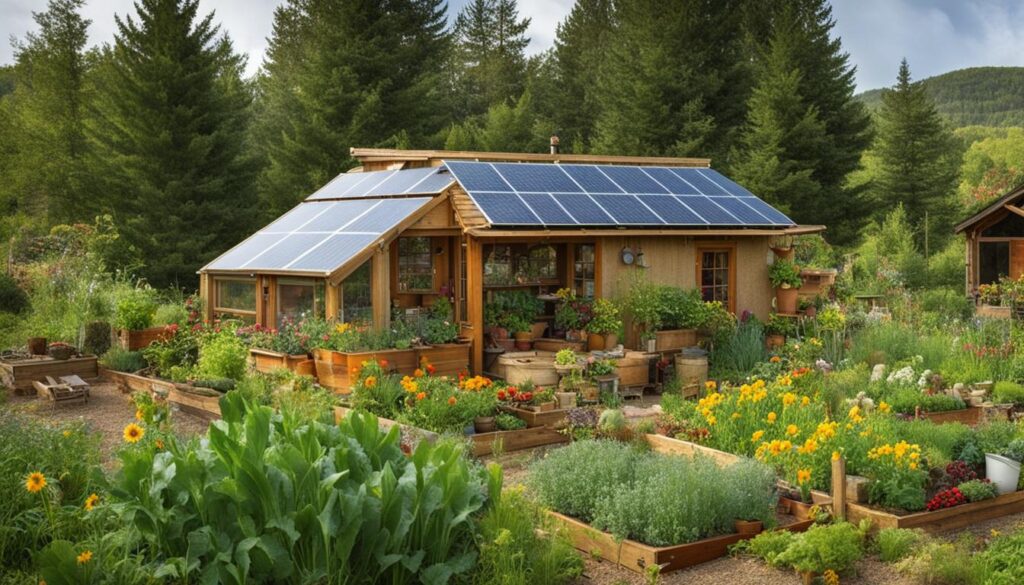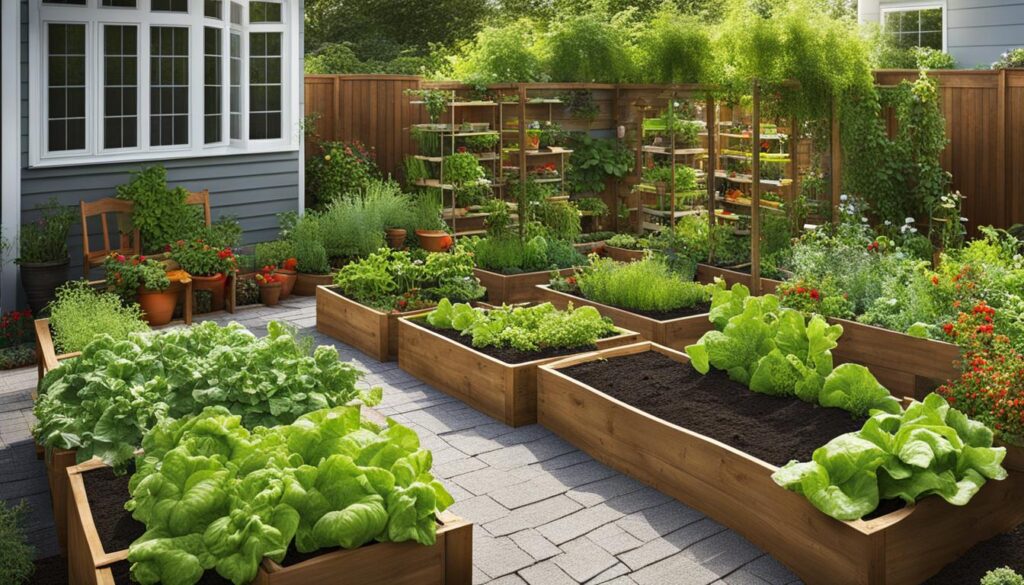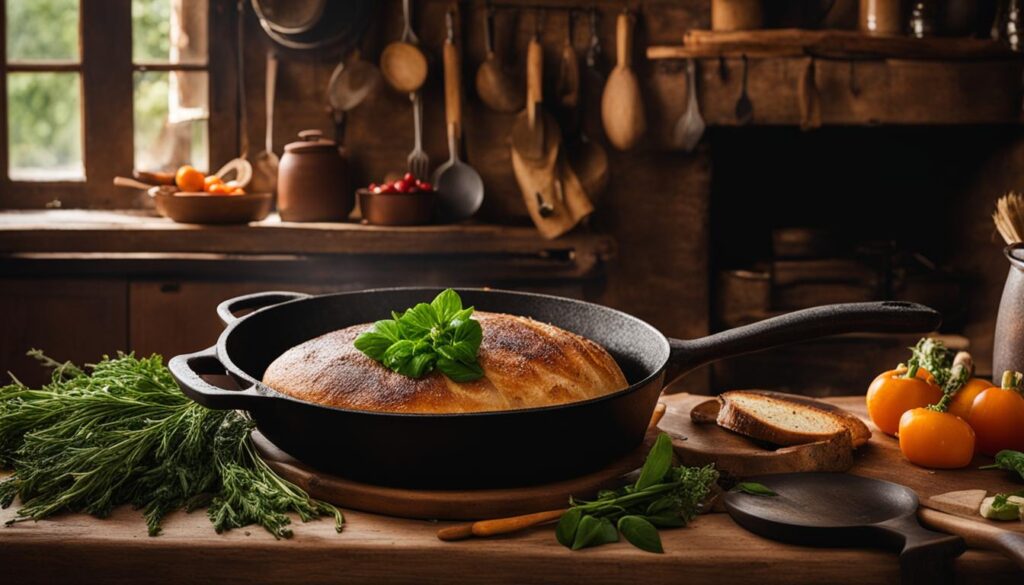
Becoming self-sufficient in cooking is an essential aspect of homesteading and prepping. It involves using ingredients from your land and creating delicious meals with minimal waste. By eating seasonally and creatively, you can maximize the food you have produced. In this article, I will explore some self-reliant recipes perfect for homestead feasts, including nettle pies, snails with rosemary, rabbit stew, leek and potato soup, and spinach cheese pies.
Key Takeaways:
- Self-reliant cooking is an essential aspect of homesteading and prepping.
- Using ingredients from your land and eating seasonally can minimize waste and maximize the food you produce.
- Nettle pies, snails with rosemary, rabbit stew, leek and potato soup, and spinach cheese pies are delicious self-reliant recipes.
- These recipes can provide sustainable and nutritious meals for homesteaders and preppers.
- By embracing self-reliant cooking, you can become more self-sufficient and reduce your reliance on store-bought ingredients.
Nettle Pies
Nettles, often seen as a nuisance, are actually nutritious and can be used in cooking. The self-sufficient farmers of Crete and Cyprus have long been experts in utilizing wild plants such as nettles. This ancient nettle pie recipe combines nettles with ingredients like onions, walnuts, and olive oil to create a delicious and cost-effective dish.
The Benefits of Nettles
Nettles are abundant in nutrients and offer numerous health benefits. They are rich in vitamins A, C, and K, as well as iron, calcium, and magnesium. Consuming nettle-based dishes, like nettle pies, can help boost your immune system, reduce inflammation, and promote healthy digestion.
The Art of Foraging
Foraging for wild plants, such as nettles, is an essential skill for self-sufficient homesteaders. By learning to identify edible plants in your surroundings, you can enjoy a variety of fresh, organic resources without relying solely on cultivated crops. Foraging not only connects you to the land but also allows you to incorporate unique flavors and textures into your meals.
“Nettles, with their vibrant green leaves and distinct flavor, add a delightful twist to traditional pie recipes. The combination of nettles, onions, walnuts, and olive oil creates a harmonious blend of earthy and nutty flavors. Don’t let the prickly reputation of nettles deter you from experiencing the culinary magic of nettle pies.”
Nettle Pie Recipe
Try this ancient nettle pie recipe and savor the flavors of self-sufficiency:
| Ingredients | Instructions |
|---|---|
|
|
Nettle pies are a wonderful addition to homestead feasts, showcasing the delicious possibilities of using organic resources from the land. Embrace the self-sufficiency of the farmers of Crete and Cyprus by incorporating nettles into your cooking repertoire and savor the unique flavors they bring.
Snails with Rosemary
Despite being considered pests in gardens, snails are actually delicacies in rural Crete. Harvesting snails for food can be a sustainable way to control garden pests while enjoying a tasty meal. This snail recipe from Crete combines snails with olive oil, salt, red wine vinegar, and rosemary for a unique and flavorful dish.
Snails, known for their slow pace, are abundant in gardens and often seen as nuisance pests. However, in rural Crete, they are transformed into a culinary delight. Self-sufficient farmers have discovered that snails not only serve as a delectable addition to their meals but also help maintain a natural balance in their gardens.
By harvesting snails for food, these farmers effectively control garden pests without the need for harmful chemicals or pesticides. This environmentally-friendly approach to pest control aligns perfectly with the principles of self-sufficient farming and sustainable living.
The snails with rosemary recipe from Crete showcases the creativity and resourcefulness of rural cuisine. This traditional dish combines the tender and succulent meat of snails with the aromatic flavors of olive oil, salt, red wine vinegar, and rosemary.
“Snails with rosemary dish is a true delicacy in rural Crete. Combining the unique flavors of snails with the aromatic essence of rosemary creates a dish that exemplifies the essence of self-sufficient farming and the rich culinary traditions of the region.” – Giorgos, a farmer in rural Crete.
To create this flavorful dish, start by thoroughly cleaning the snails to remove any dirt or impurities. Then, simmer them in a pot with olive oil, salt, and red wine vinegar until tender. Finally, garnish with fresh rosemary for a burst of aromatic goodness.
| Ingredients | Quantity |
|---|---|
| Snails | 500g |
| Olive oil | 3 tablespoons |
| Salt | 1 teaspoon |
| Red wine vinegar | 2 tablespoons |
| Rosemary | 2 sprigs |
Snails with rosemary is a dish that not only satisfies the taste buds but also represents the essence of self-sufficient farming. By utilizing the resources available on their land, farmers in rural Crete are able to create delectable delicacies that highlight the unique flavors of their region.
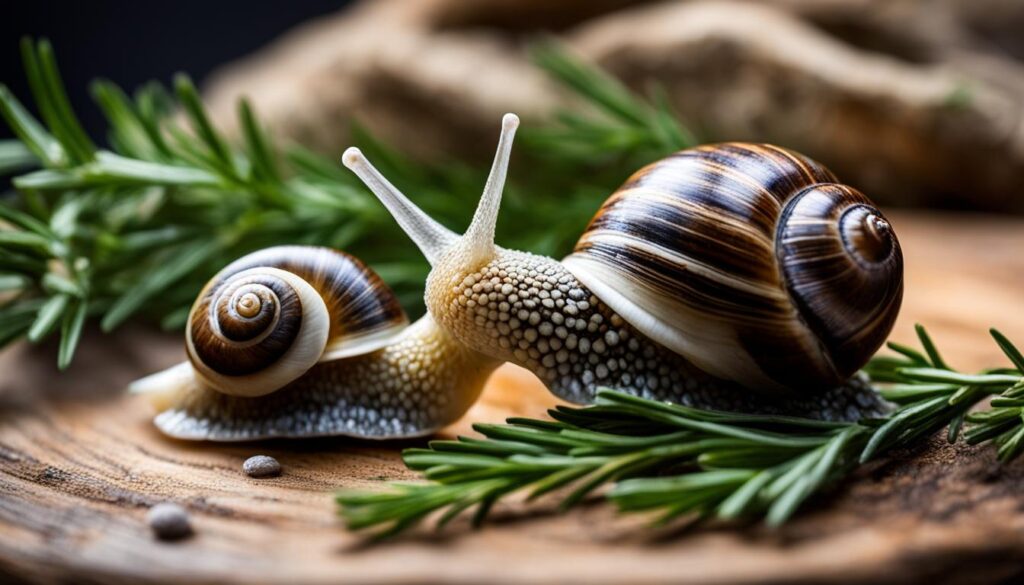
Rabbit Stew
When it comes to homestead meat production, rabbits are a versatile choice for self-sufficient homesteaders. Known for their fast reproduction and lean protein, rabbits provide a sustainable source of meat for your family. One particularly delicious way to enjoy rabbit meat is through a hearty and flavorful rabbit stew, inspired by the culinary traditions of Cyprus.
This rabbit stew recipe combines the tender and succulent diced rabbit with a medley of aromatic vegetables, herbs, and spices. The combination of onions, garlic, celery, carrots, and mushrooms creates a rich and flavorful base for the stew. The addition of red wine and vinegar adds complexity to the dish, enhancing the flavors of the rabbit and vegetables.
Not only does this rabbit stew provide a comforting and satisfying meal, but it also showcases the versatility and creativity of homestead cooking. By utilizing the bounty of your land and incorporating locally available ingredients, such as rabbit meat from your own homestead, you can create a wholesome and nourishing dish.
Moreover, rabbit fur can also be used in various homestead projects. With its soft texture and durability, rabbit fur can be transformed into cozy blankets, warm clothing, or even intricate crafts. This allows you to make the most out of every part of the animal, minimizing waste and promoting sustainability.
For a visual inspiration, take a look at this beautiful image of a delicious rabbit stew:
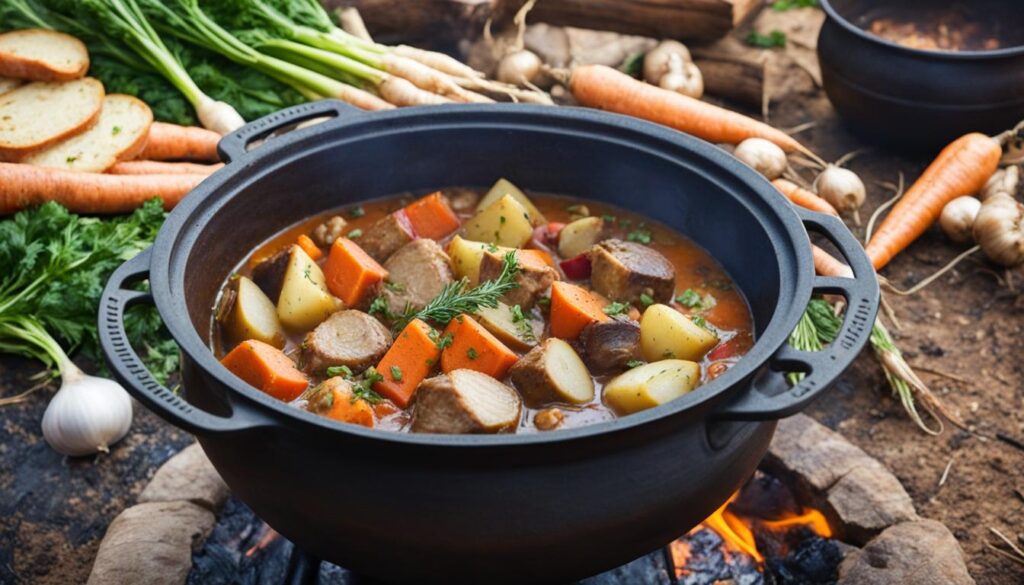
As you can see, the rich colors and textures of the stew are enhanced by the careful selection and preparation of ingredients. The tender rabbit meat, paired with the vibrant vegetables and aromatic herbs, creates a visually appealing and appetizing dish.
So, for homesteaders looking to embrace self-reliant cooking and explore the possibilities of homestead meat production, rabbit stew is a fantastic option. Not only does it provide a lean and healthy protein source, but it also showcases the versatility of rabbit meat and the culinary traditions of Cyprus.
| Ingredients | Instructions | Serving Suggestion |
|---|---|---|
|
|
This rabbit stew pairs well with crusty bread or fluffy mashed potatoes. The rich flavors of the stew complement the earthy notes of the rabbit meat and the sweetness of the vegetables. Serve it in a deep bowl, garnished with a sprig of fresh herbs, and enjoy a comforting meal straight from your homestead. |
Leek and Potato Soup
When late winter hits and the homestead garden is still thriving with hearty vegetables, it’s the perfect time to whip up a warm and nourishing bowl of leek and potato soup. This satisfying recipe makes use of two staple ingredients commonly found in homegrown produce – leeks and potatoes. Not only does this soup showcase the flavors of homestead vegetables, but it also provides a comforting and nutritious meal during the cooler months.
Leeks, a member of the Allium family, are known for their mild onion-like flavor and make a fantastic addition to soups. Their unique taste adds depth and complexity to the soup, while the starchy potatoes provide a creamy and thick texture. Together, these ingredients create a harmonious blend that is both comforting and satisfying.
To prepare this late winter recipe, gather the following ingredients:
- 2 leeks, sliced
- 4 potatoes, peeled and cubed
- 1 onion, diced
- 2 tablespoons olive oil
- 4 cups vegetable stock
- 1 teaspoon dried thyme
- Salt and pepper to taste
Instructions:
- In a large pot, heat the olive oil over medium heat. Add the leeks, potatoes, and onion, and sauté until they start to soften, about 5 minutes.
- Pour in the vegetable stock, and bring the soup to a boil. Once boiling, reduce the heat to low and let it simmer for 20-25 minutes, or until the potatoes are tender.
- Using an immersion blender or a countertop blender, puree the soup until smooth and creamy.
- Season with dried thyme, salt, and pepper to taste. Stir well to combine.
- Simmer the soup for an additional 5 minutes to let the flavors meld together.
- Serve hot, garnished with a drizzle of olive oil and a sprinkle of fresh herbs.
This nourishing leek and potato soup is the perfect way to celebrate the flavors of late winter while enjoying the bounty of your homestead vegetables. The creamy texture and comforting taste make it a versatile dish – serve it as an appetizer, a main course with crusty bread, or as a side with a hearty salad. Embrace the self-reliant spirit and savor the flavors of homegrown produce with this delightful soup.
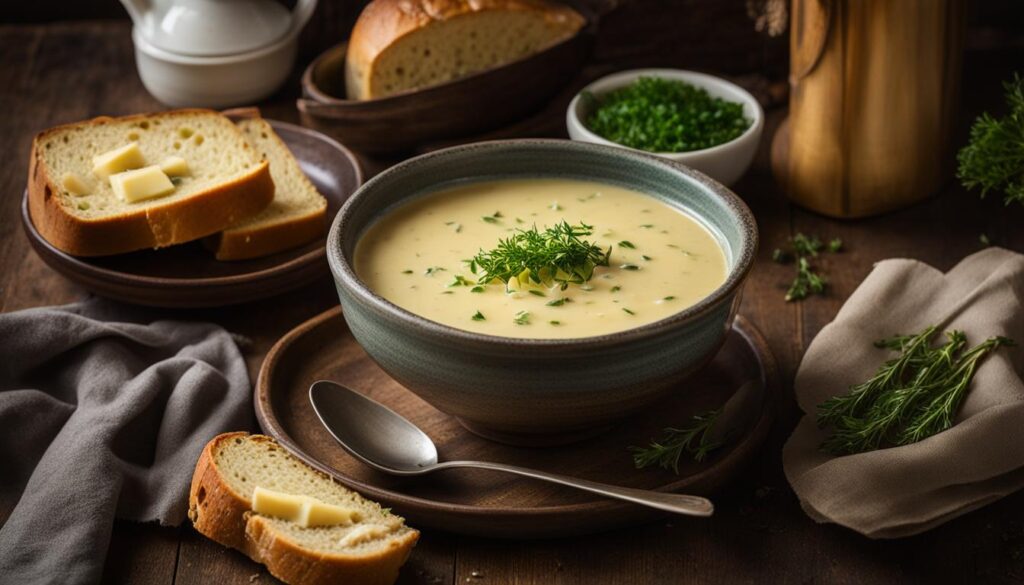
| Ingredients | Quantity |
|---|---|
| Leeks | 2 |
| Potatoes | 4 |
| Onion | 1 |
| Olive oil | 2 tablespoons |
| Vegetable stock | 4 cups |
| Dried thyme | 1 teaspoon |
| Salt | To taste |
| Pepper | To taste |
Spinach Cheese Pies
Spinach, a nutritious leafy green, becomes a delectable ingredient when combined with cheese and encased in crispy filo pastry. These Spinach Cheese Pies, also known as Spanakoita in Greece, exemplify the resourcefulness and culinary genius of self-sufficient homesteaders. By utilizing ingredients like olive oil, spinach, parsley, dill, mint, feta cheese, and seasonings, these pies capture the essence of Greek cuisine while providing a nutritious and flavorful meal.
The combination of spinach and cheese in these pies creates a harmonious blend of flavors and textures. The earthiness of the spinach is beautifully complemented by the creamy and tangy notes of the feta cheese. Enclosed in a flaky and crispy filo pastry, these pies offer a delightful contrast of textures that are both satisfying and indulgent.
Self-sufficient homesteaders, with their commitment to cultivating their own food, are able to harness the power of nutritious greens like spinach to create wholesome and nourishing meals. Spinach is packed with essential vitamins and minerals, making it an excellent addition to any diet. Incorporating this vibrant green into these pies not only enhances their nutritional value but also adds a vibrant pop of color that is visually appealing.
Whether enjoyed as a main course or served as appetizers, Spinach Cheese Pies are a testament to the ingenuity and creativity of self-sufficient homesteaders. By showcasing Greek cuisine and utilizing ingredients readily available on a homestead, these pies offer a delicious and satisfying meal that celebrates the bounty of the land. So, why not indulge in these mouthwatering pies and experience the flavors of self-reliant cooking?
FAQ
What is self-reliant cooking?
Self-reliant cooking is a method of cooking that involves using ingredients from your own land and creating delicious meals with minimal waste. It is often practiced by homesteaders and preppers to maximize the food they have produced.
Why should I practice self-reliant cooking?
Self-reliant cooking allows you to be more self-sufficient and reduces your reliance on store-bought ingredients. It also helps in reducing food waste and can be more cost-effective in the long run.
What are some self-reliant recipes for homestead feasts?
Some self-reliant recipes perfect for homestead feasts include nettle pies, snails with rosemary, rabbit stew, leek and potato soup, and spinach cheese pies.
How do I make nettle pies?
Nettle pies are made by combining nettles with ingredients like onions, walnuts, and olive oil to create a delicious and cost-effective dish.
What can I do with snails on my property?
Instead of considering snails as pests, you can harvest them for food. Snails can be cooked with olive oil, salt, red wine vinegar, and rosemary for a unique and flavorful dish.
How do I make rabbit stew?
Rabbit stew is made by combining diced rabbit with onions, garlic, celery, carrots, mushrooms, herbs, red wine, and vinegar for a hearty and flavorful dish.
What are some homestead recipes using leeks and potatoes?
One delicious recipe is leek and potato soup. It can be made using homegrown leeks, potatoes, onions, olive oil, vegetable stock, herbs, and seasonings.
What can I make with spinach and cheese?
Spinach cheese pies, also known as Spanakoita in Greece, are a popular dish among self-sufficient homesteaders. These pies are made by combining spinach, feta cheese, olive oil, parsley, dill, mint, and seasonings, and encasing them in crispy filo pastry.

